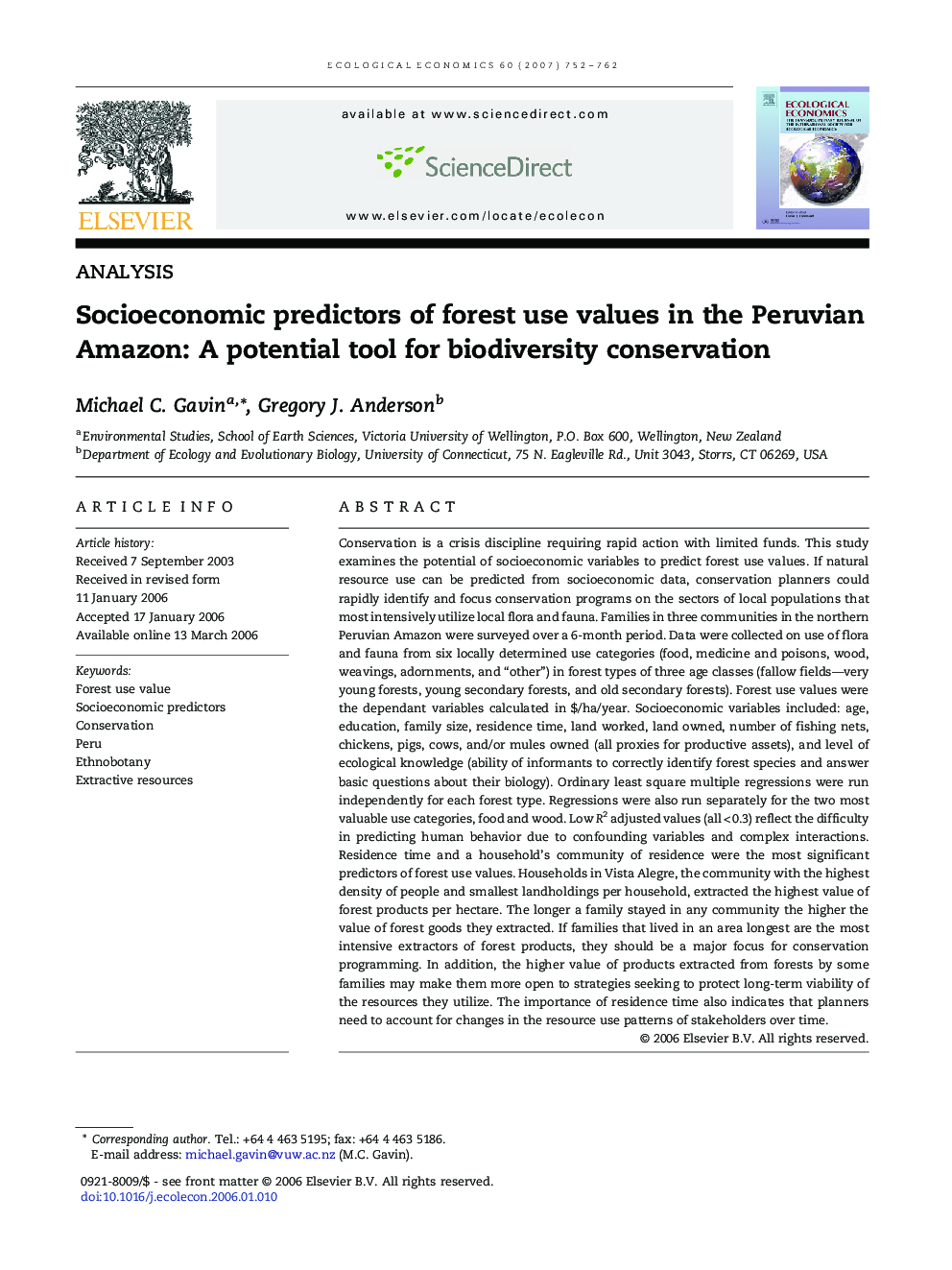| کد مقاله | کد نشریه | سال انتشار | مقاله انگلیسی | نسخه تمام متن |
|---|---|---|---|---|
| 5052293 | 1476416 | 2007 | 11 صفحه PDF | دانلود رایگان |

Conservation is a crisis discipline requiring rapid action with limited funds. This study examines the potential of socioeconomic variables to predict forest use values. If natural resource use can be predicted from socioeconomic data, conservation planners could rapidly identify and focus conservation programs on the sectors of local populations that most intensively utilize local flora and fauna. Families in three communities in the northern Peruvian Amazon were surveyed over a 6-month period. Data were collected on use of flora and fauna from six locally determined use categories (food, medicine and poisons, wood, weavings, adornments, and “other”) in forest types of three age classes (fallow fields-very young forests, young secondary forests, and old secondary forests). Forest use values were the dependant variables calculated in $/ha/year. Socioeconomic variables included: age, education, family size, residence time, land worked, land owned, number of fishing nets, chickens, pigs, cows, and/or mules owned (all proxies for productive assets), and level of ecological knowledge (ability of informants to correctly identify forest species and answer basic questions about their biology). Ordinary least square multiple regressions were run independently for each forest type. Regressions were also run separately for the two most valuable use categories, food and wood. Low R2 adjusted values (all <Â 0.3) reflect the difficulty in predicting human behavior due to confounding variables and complex interactions. Residence time and a household's community of residence were the most significant predictors of forest use values. Households in Vista Alegre, the community with the highest density of people and smallest landholdings per household, extracted the highest value of forest products per hectare. The longer a family stayed in any community the higher the value of forest goods they extracted. If families that lived in an area longest are the most intensive extractors of forest products, they should be a major focus for conservation programming. In addition, the higher value of products extracted from forests by some families may make them more open to strategies seeking to protect long-term viability of the resources they utilize. The importance of residence time also indicates that planners need to account for changes in the resource use patterns of stakeholders over time.
Journal: Ecological Economics - Volume 60, Issue 4, 1 February 2007, Pages 752-762